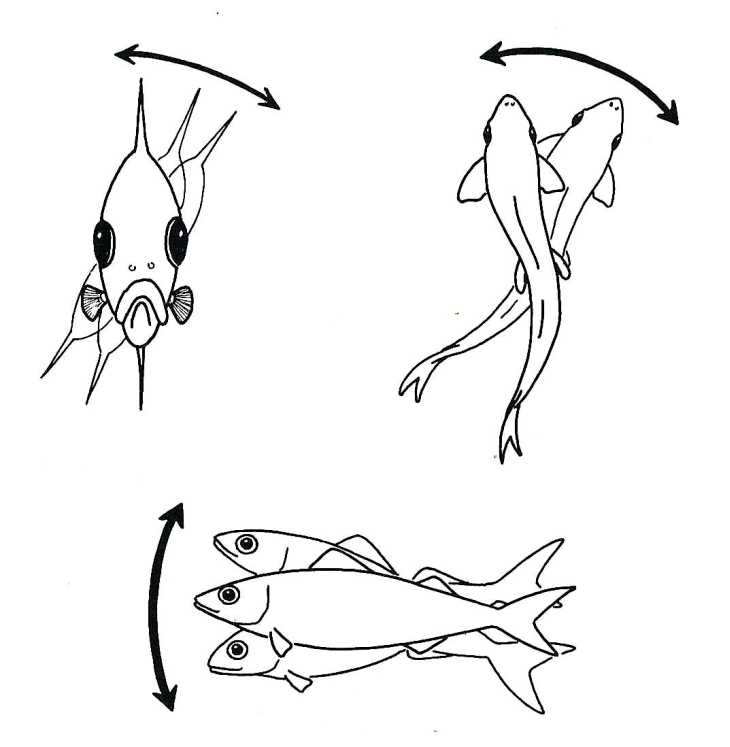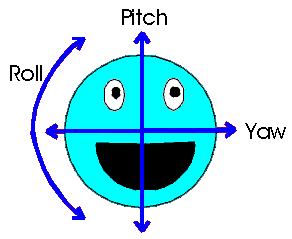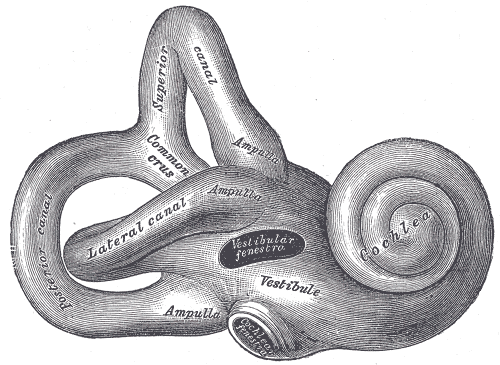28 Mar Spiral movement

The body knows how to follow the mouth. Mouth-directed movement is closely followed by eye directed movement, and reaching with the dominant hand. The body learns to follow, pushing and pulling on the ground or whatever stable surface is available.
https://www.youtube.com/watch?v=D9Ko7U1pLlg
As I mentioned in previous posts, mouth-directed movement is a true primitive movement pattern, one of the most ancient in existence. Creatures had mouths long before there was anything on this planet resembling an eye. Those creatures with mouths also had a digestive tube, and they needed to move those tubes through water and along the ocean floor, following their mouths.
Now, even nematodes (unsegmented microscopic worms, the most prevalent and among the most primitive multi-cellular organisms on earth) have muscles on their fronts, backs, and sides, responsible for the flexion, extension and lateral flexion required to direct their mouths at stuff and get to it. It’s a pattern of structure, function and movement which has been retained in pretty much all subsequent models, including us.

from biology-resources.com
I recently filmed some videos myself which demonstrate some slightly more complex ways that these patterns and orienting reflexes manifest in the movements of land-based vertebrates:
Fish are obviously an in-between model, somewhere between the microscopic worm and us on the evolutionary timescale (NOTE: by this I don’t mean that modern fish evolved from modern nematodes, and that we evolved from modern fish. I mean rather that the nematode-type model has been around longer than the fish-type model, which has been around much longer than the mammal-primate-human-type).
Fish still need to get around behind their mouths, and they still don’t really have much in the way of limbs, but they’ve got eyes, spines, ribcages and tails, and well-developed muscles for directing their mouths at stuff and getting to it.
This means they need to be able to move and orient themselves in three-dimensional space, controlling roll, yaw and pitch.

from marinebiology.org
All vertebrates, including fish and humans, have a special sense organ in the head for detecting the levels of roll, pitch and yaw, relative to gravity. It’s part of what is known as the vestibular system (deep in the inner ear, in humans) and its crucial part is a little group of “semi-circular canals”, tubes containing fluid and little hairs which detect the movement and acceleration of that fluid as the head rotates on any of the x,y, or z axes.

The nervous systems of vertebrates then have a whole range of circuits or reflexes which help the body orient itself appropriately with respect to the changing position and direction of the head and with respect to gravity.
Now, we humans have developed brains which give special importance to the hands, so we have a whole bunch of neural mechanisms linking the mouth, the eyes, and reaching or grasping movements of the hands. Think about babies again: first they search around with their mouths for something yummy to suck on, later they open their eyes and start looking around at stuff, later they learn that they can control the movement of their hands and they start reaching for stuff that they can see with their eyes, which they then bring to their mouth for further investigation.
Below is a video of my Baguazhang teacher, Luo Dexiu, from Taiwan. Baguazhang is a Chinese martial art, heavily influenced by Daoist yoga. For cultural reasons, most Chinese martial arts and yogic or qigong type practices are performed standing up, but the spiral movement, body following the eyes and hands, and training of the inner ear through movement in three planes should all still be apparent:
I was just pointed to the work of Tim Anderson, who has a site called Original Strength, which seems promising. The first video I found was this one, which shows me that he’s onto some good stuff, thinking along the right lines:
And here, finally is some COMBAT SYSTEMA “ground gun flow” work, which proves that these kinds of movements are SUPER SERIOUS!


Pieter
Posted at 19:49h, 07 AprilSir, Simon,
Thanks again for another interesting and inspiring blogpost. I really enjoyed the videos you made. You should embed the second and third part in the blog, they deserve full attention!
The videos are very similar to movements that I explore with my patients, but I like your take on the eyes, and the gradual increase in complexity! Thanks, I learned something valuable.
Cheers,
Pieter
simon
Posted at 13:41h, 10 AprilThanks Pieter. Ok maybe I’ll edit the post and embed those videos as well. Are you a Feldenkrais teacher?
Pieter
Posted at 16:32h, 10 AprilSimon, I’m a physical therapist (in Belgium) with a longtime interest in evolutionary biology, anthropology and movement. Thus natural, ancestral movements you talk about, are something I find very interesting. And I’m not a Feldenkrais teacher, although I think of Moshe and his works as very valuable. Cheers
simon
Posted at 10:13h, 11 AprilAwesome Pieter! That’s basically what I am as well, with the addition of a longtime fascination with the whole world of all that yogic, Buddhist Daoist meditative-mind-body changing stuff.
Janice
Posted at 18:40h, 16 AprilHi. I am studying body therapy and have chosen an assignment drawing on an ancestral health approach on the interaction between movement (physical exercise) and health. I would appreciate pointers on resources; articles, video, books etc for this. Cheers
Pingback:The learning spiral – from fractals to freedom | iliketothinkabout/
Posted at 00:54h, 13 September[…] say that spiral movements are among the oldest on the planet, as eye-less creatures grazed the ocean floor following their […]
Pingback:Spiraling and Moving | Sai Choo Muses
Posted at 20:28h, 19 April[…] For an unknown reason, I decided to do a web search on “spiral movement” again recently, and came across Simon Thakur’s excellent article and demonstrations of spiral movement. […]